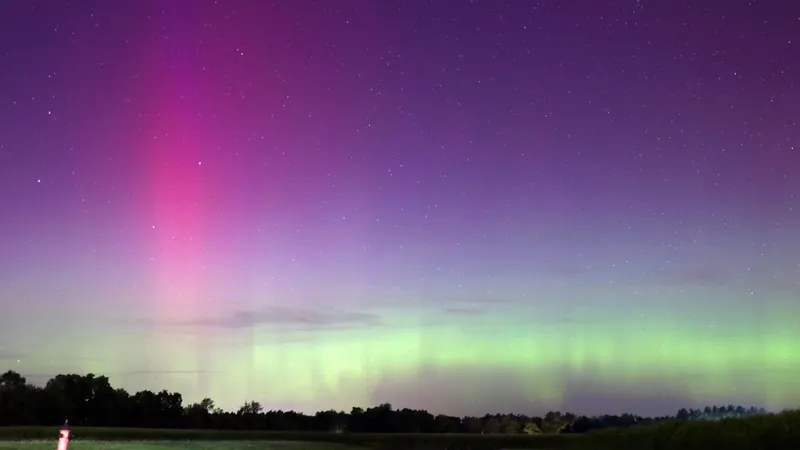
Winter Night Skies: Brace Yourself for Stunning Meteor Showers and Possible Northern Lights!
2024-11-27
Author: Ken Lee
As winter blankets the night skies, astronomy enthusiasts are in for a treat! The National Oceanic and Atmospheric Administration (NOAA) has announced that we can look forward to spectacular meteor showers and a potential return of the mesmerizing northern lights, also known as the aurora borealis.
This celestial phenomenon, characterized by swirling red and green hues, originates from intense geomagnetic storms erupting from the sun. In October, these stunning lights painted the sky across New York State and much of the northeastern United States, captivating stargazers and casual observers alike.
Shawn Dahl, a service coordinator with NOAA and an ardent astronomy enthusiast, reveals that we are currently in the solar maximum phase of solar cycle 25, which significantly increases the likelihood of solar storms. “This means we can expect more geomagnetic storms that might allow the northern lights to be seen at lower latitudes than usual,” Dahl explained. This fascinating period of heightened solar activity is expected to persist through 2025, perhaps even extending into early 2026, presenting numerous opportunities to catch a glimpse of the aurora.
Prepare for a Meteor Shower Extravaganza!
Winter is also synonymous with meteor showers, with the Geminids taking center stage! This impressive meteor shower, named after the constellation Gemini where its radiant point is located, will peak around December 13-14. During this event, observers can expect to see nearly 100 meteors per hour at peak viewing times, weather permitting. Although many of these meteors may be faint, a substantial number will be bright enough to catch your eye, especially in areas with dark skies.
But wait, there’s more! The Quadrantids meteor shower will shine on the night of January 2-3. This shower is known for its intensity but typically lasts only a short window of six hours—so timing is crucial! Thankfully, a crescent moon will dip below the horizon before the peak, creating the perfect dark canvas for viewing these breathtaking meteor streaks.
Unlock the Secrets of the Winter Constellations
But the wonders of the winter sky don’t stop with meteors and auroras. Winter evenings also showcase spectacular constellations. Among them is the striking Orion, the mythical hunter, identifiable by its notable belt of three stars and two brilliantly bright stars. Additionally, stargazers can look for Taurus the Bull, which boasts the Pleiades star cluster, often referred to as the "Seven Sisters," forming one tip of its impressive horns.
As you prepare to embark on your stargazing adventures this winter, remember that the skies are full of hidden treasures waiting to be discovered. So grab your blankets, your favorite warm beverage, and prepare for a night under the stars that you won’t soon forget! Whether it's the delicate dance of meteor showers or the ethereal glow of the northern lights, this winter promises to be a cosmic celebration!




 Brasil (PT)
Brasil (PT)
 Canada (EN)
Canada (EN)
 Chile (ES)
Chile (ES)
 España (ES)
España (ES)
 France (FR)
France (FR)
 Hong Kong (EN)
Hong Kong (EN)
 Italia (IT)
Italia (IT)
 日本 (JA)
日本 (JA)
 Magyarország (HU)
Magyarország (HU)
 Norge (NO)
Norge (NO)
 Polska (PL)
Polska (PL)
 Schweiz (DE)
Schweiz (DE)
 Singapore (EN)
Singapore (EN)
 Sverige (SV)
Sverige (SV)
 Suomi (FI)
Suomi (FI)
 Türkiye (TR)
Türkiye (TR)